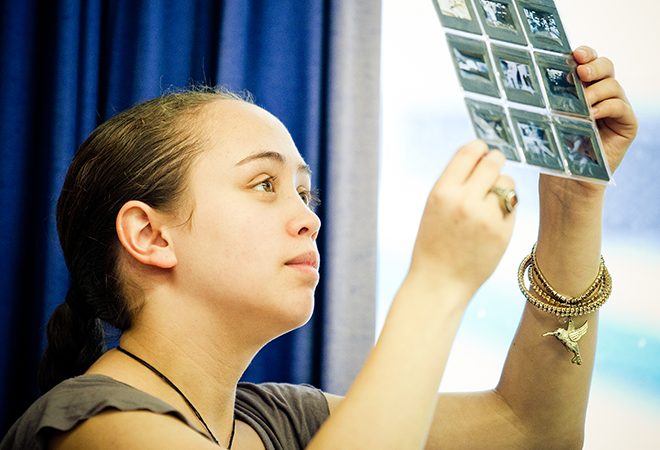
The Path of Nexus: Māori Student Success in a Design School Context
Status
Completed: 6 December 2014
Project Details
A project completed in 2014, undertaken by Otago Polytechnic, to produce a video publication that talks about a student-centred learning environment that has been particularly rewarding for Māori students in the Communication Design degree programme at Otago Polytechnic.
Aims:
The main aim of the project was to produce a short film looking at three projects and exploring how cultural bridges are built between students, teachers, Māori advisors and communities.
Methodology:
The film produced by the project includes both staff and student voices, along with representatives of community groups and collaborators.
Team

Caroline McCaw
Project Leader
Otago Polytechnic
Jon Wilson
Otago Polytechnic
Gina Huakau
Otago Polytechnic
Justine Camp
Otago Polytechnic
Vincent Egan
Student
Otago Polytechnic
Thomas Te Whaiti-Henry
Student
Otago Polytechnic
Madison Henry-Ryan
Student
Otago PolytechnicStatus
Funding
$4,348.00 (excl GST)
Key Findings
The key findings from the project were:
- The Communication Design degree programme at Otago Polytechnic has developed a student-centred learning environment with a number of practices that have been particularly rewarding for Māori students. The learning environment includes students working in peer and student-staff teams on commercial and community projects. The project has encouraged collaboration, led to a number of rewarding integrations of cultural practices for a cohort of Māori learners with local communities, and supported the development of learner leadership and personal skills.
- Three practices were identified as contributing to an enhanced learning environment in a previous project (McCaw et al., 2012). These are: encouraging students to keep culture at the centre of their learning; encouraging students to work together in groups; and valuing the importance of students’ own identities.
- These practices occur in an environment where the success of Māori learners is important. Otago Polytechnic's Māori Strategic Framework and senior management encourage significant consultation and commitment with local Kāi Tahu papatipu rūnaka representatives and the provision of relevant learning opportunities for Kāi Tahu and other Māori learners.
- The earlier project identified the following four approaches that are embedded in the practices described in this film: Whakawhanaungatanga: an approach to learning together that puts people first; Art, design and hapori (community): an approach that does not separate out art and design, but rather sees creativity as connected to community well-being: Mahinga (activities): an approach that focuses on learning by doing (repetition not iteration); and Takitini: an approach that focuses on collective rather than individual learning.
- The film has been directed and produced by the students employing the above practices, and strongly reflects their own voices and engagement. It reveals the personal growth of these students as they reflect on their past and future and as they begin their career in design in ways that are forward-looking and adaptable. It outlines the benefits of these projects and describes how these projects have helped students as well as local communities in their broader educational objectives.
Key Recommendations
A key insight into the project’s achievements is noted here:
Impact of the enhanced learning environment | Since the implementation of the enhanced learning environment within the Communication Design degree programme, Māori student numbers (including completions and retention) are on an improved trajectory. In 2011 course completions for Māori students rose from 75 per centin 2011 to 97 per cent in 2012 and reached 100 per cent in 2013. There has also been growth in enrolments of Māori students. In 2011 and 2012 Māori students accounted for around 13 per cent of first-year student enrolments. This grew to 20 per cent of first-year students identifying as Māori in 2013.
A video produced by Caroline McCaw, Jon Wilson, Gina Huakau, Justine Camp, Vincent Egan, Thomas Te Whaiti-Henry and Madison Henry-Ryan.
(YouTube, 9.40 min, 480p).
- 6 December 2014